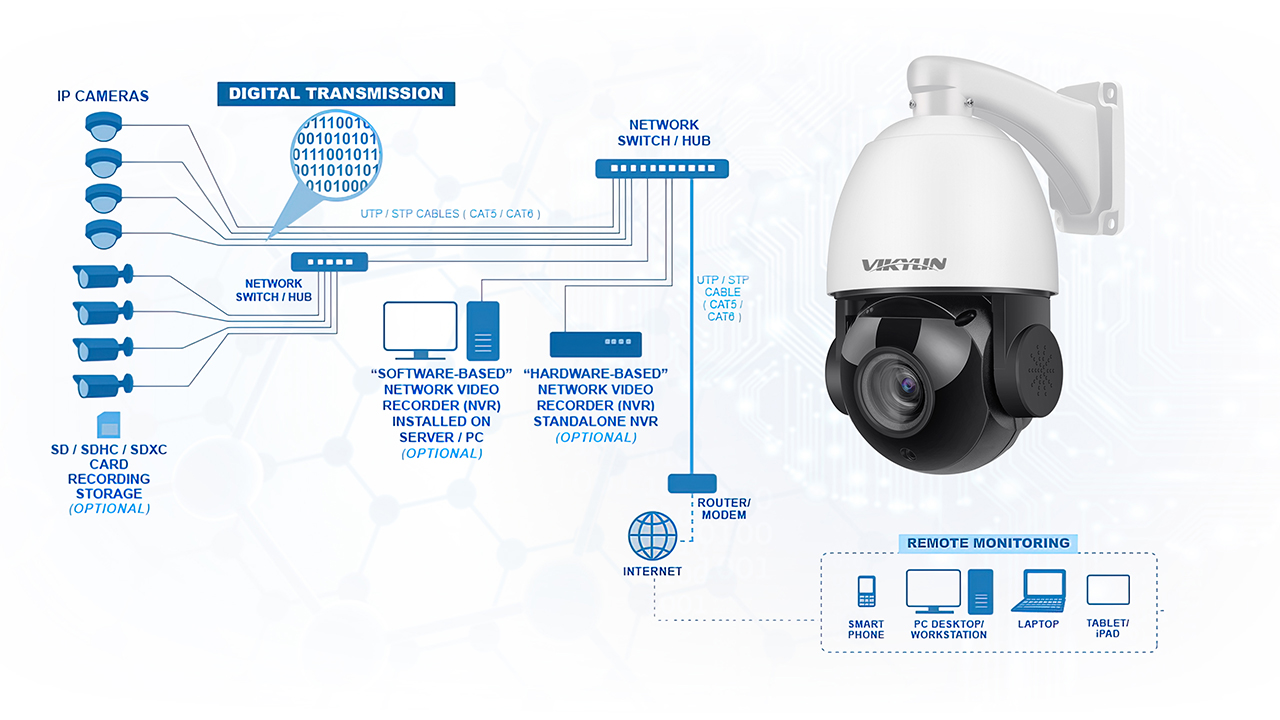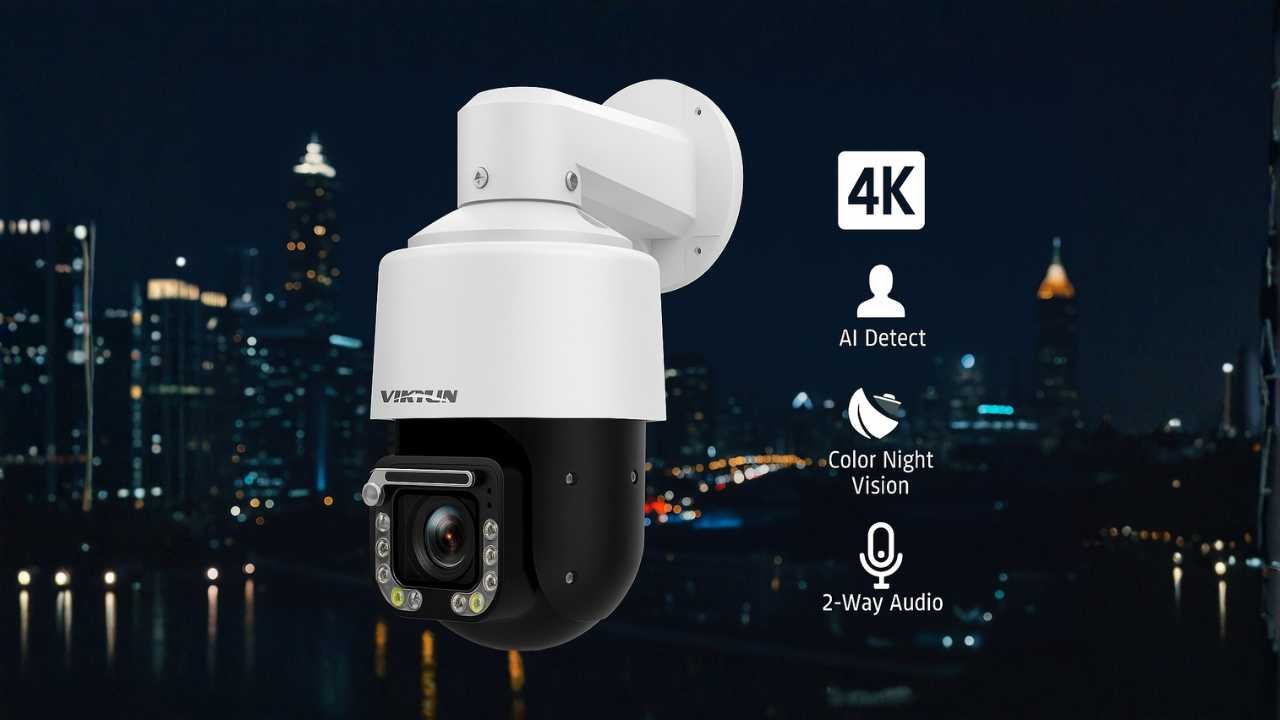In the IP home security camera system, we all know that the size of the storage space is inseparable from the number of channel images and image quality. Today we will make a brief summary of the calculation of storage space and transmission bandwidth.
First Clarify A Few Concepts
- Bit rate: the number of bits transmitted per second, in bps. The higher the bit rate for broadband transmission, the larger the data transferred. In the case of the same resolution, the larger the code stream of the video file, the smaller the compression ratio and the higher the definition of the picture.
- Uplink bandwidth: The bandwidth for uploading local information to the network, the size is usually expressed by the upstream rate.
- Downlink bandwidth: The bandwidth for downloading network information to the local, size is usually expressed in terms of downlink rate.

Transmission Broadband Calculation
Network bandwidth size = bit rate size × IP cameras quantity
According to my understanding, the bit rate refers to the speed of the network, and the bit rate refers to the size of the surveillance video generated per second.
- The bandwidth at the network security camera end refers to: upstream bandwidth. Because the monitoring terminal uploads the video information to the video monitoring room)
- The bandwidth of the monitoring center refers to: downlink bandwidth.
The bit rate of the specific network security camera (each brand of poe cams is slightly different)
- 1080P (2 million pixels) video format, the bit rate of each poe cams is 4Mbps. That is, the data transmission bandwidth required by each camera is 4Mbps, and the data transmission bandwidth required by 10 cameras is: 4Mbps (bit rate of video format) × 10 (number of cameras) = 40Mbps (uplink bandwidth) That is: the network uplink bandwidth required for monitoring in various places using 1080P video format is at least 40Mbps
- 960P (1.3 million pixels) video format, the bit rate of each camera is 3Mbps
- 720P (1 million pixels) video format, the bit rate of each camera is 2Mbps
Bandwidth required by the monitoring center
- The required bandwidth of 1080P (2 million pixels) video format: 4Mbps (bit rate of video format) × 50 (sum of the total number of home poe security cameras at the monitoring point) = 200Mbps (downlink bandwidth) That is: the network downlink bandwidth required by the 1080P video format monitoring center is at least 200Mbps
- The required bandwidth of 960P (1.3 million pixels) video format: 3Mbps (bit rate of video format) × 50 (sum of the total number of home poe security cameras at monitoring points) = 150Mbps (downlink bandwidth)
- The required bandwidth of 720P (1 million pixels) video format: 2Mbps (bit rate of video format) × 50 (sum of the total number of cameras at the monitoring point) = 100Mbps (downlink bandwidth)

Calculation of storage space capacity
(Note: storage unit conversion 1TB=1024GB; 1GB=1024MB; 1MB=1024KB)
Code stream size (unit: KB/s; that is: bit rate ÷ 8) × 3600 (unit: second; the number of seconds in 1 hour) × 24 (unit: hour; the length of a day) × 30 (the number of days saved) × 50 (the total number of network security camera recordings to be saved at the monitoring point) ÷ 0.9 (the loss of 10% space due to disk formatting) = the size of the required storage space.






